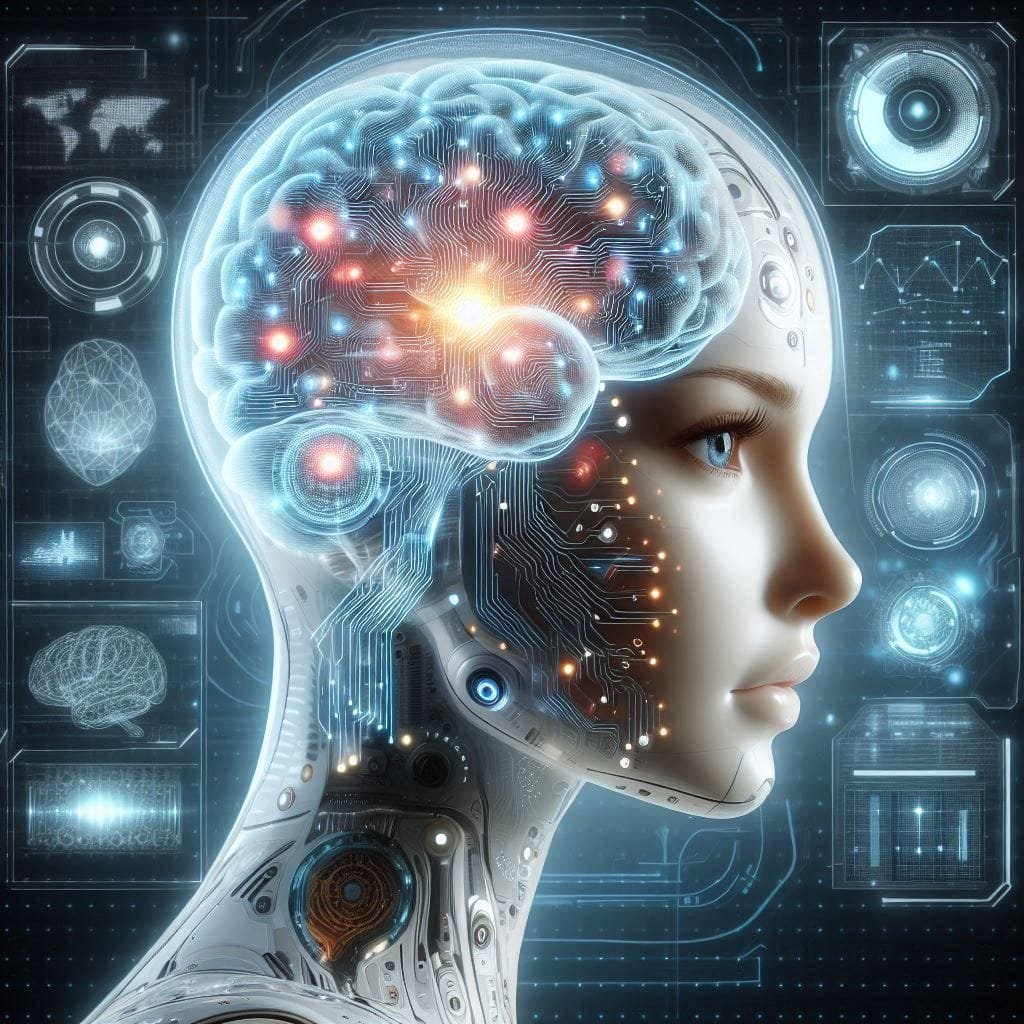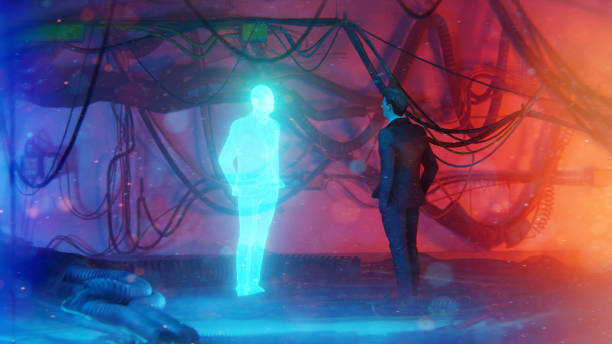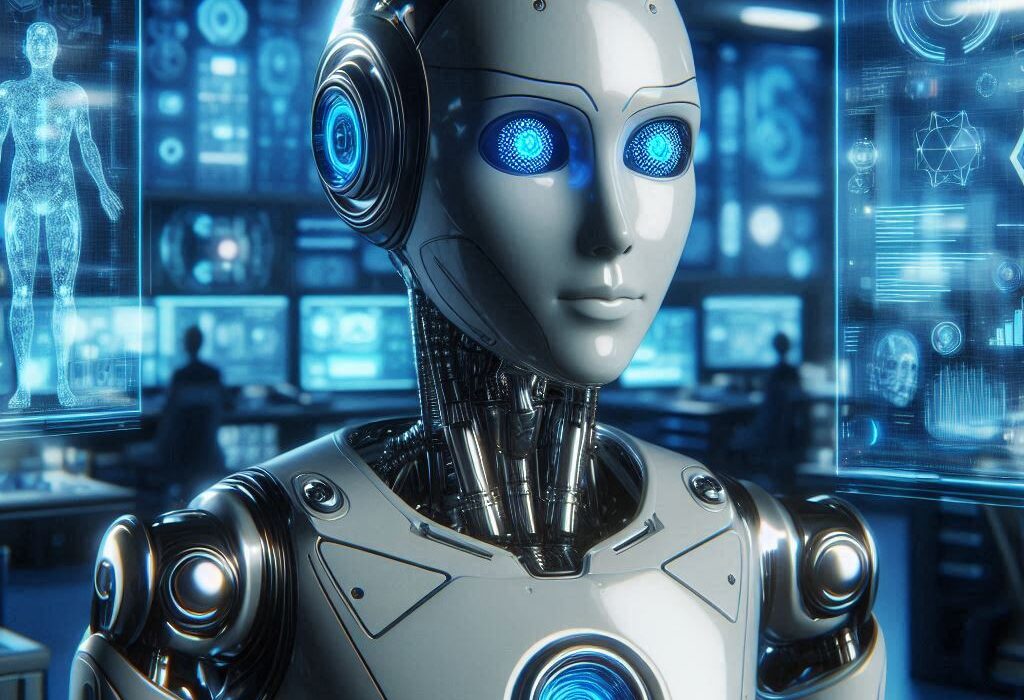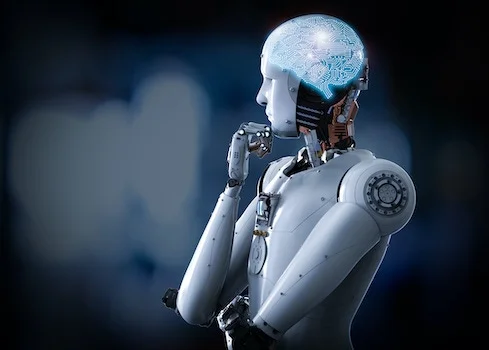Somewhere inside your skull, electricity dances through a tangled web of eighty-six billion neurons. They flicker and spark, forming thoughts, dreams, fears, and memories. This vast organic network—the human brain—is arguably the most complex object in the known universe. And for centuries, it has guarded its secrets jealously.
Scientists have tried to decode it with scalpels, with microscopes, with mathematical models, and with metaphor. But for all their efforts, the brain has remained an enigma, its depths dark and winding, like an ocean trench no one could fully chart.
Until now.
Artificial intelligence is changing the story.
Not just enhancing brain research—but rewriting how we investigate the very essence of thought. With algorithms that learn, models that adapt, and neural networks inspired by the biological ones, AI is allowing us to peer into the mind with a clarity that once seemed like science fiction.
This is no longer just neuroscience. It’s the fusion of biology and machine, a marriage of intuition and computation. And it’s bringing us closer than ever to understanding who—and what—we really are.
The Silent Symphony Inside Us
The human brain is not a quiet place. Every second, billions of electrical signals shoot between cells. The rhythm of this neural orchestra defines how we move, speak, feel, and remember. But the melody is buried beneath layers of tissue and time, and for decades, scientists could only guess at its structure.
Then, along came neuroimaging. Technologies like fMRI and EEG let researchers glimpse brain activity in real time. They lit up the mind like a satellite photo at night. Suddenly, we could see which regions sparked during a math problem or a memory. But these tools were still limited. They provided snapshots, not stories. We could see where the brain worked—but not how.
What was missing was a way to make sense of the complexity. Billions of data points, all shifting constantly. The human mind, in all its chaos and beauty, had outpaced human analysis.
And that’s when AI stepped in.
Teaching Machines to Think About Thought
Artificial intelligence has a unique advantage over traditional science: it doesn’t need a theory before it begins. It doesn’t ask why at first—it just sees what is. By pouring massive datasets into deep learning models, researchers let AI find patterns we never could.
In one groundbreaking study, researchers at the Allen Institute for Brain Science used machine learning to map connections between different types of neurons across vast regions of mouse and human brains. The result was a 3D map of unprecedented detail—a sort of biological Google Earth for the mind.
In another, scientists trained AI to watch brain scans and guess what a person was looking at. The machine correctly identified images—like a cat, a house, or a tree—based solely on brain activity. The AI wasn’t just detecting data; it was reading thought’s shadow.
These breakthroughs aren’t mere parlor tricks. They are the first steps toward decoding mental states, understanding emotion, and perhaps one day, translating memory itself.
Dreams, Reconstructed
Imagine you wake from a vivid dream—faces, colors, places all swirling into a half-remembered blur. Now imagine an AI system that could reconstruct that dream, turning brain activity into images on a screen.
That’s not a fantasy. It’s already being tested.
In Japan, researchers have used deep neural networks to reconstruct visual images from brain scans. The AI “reads” activity from the visual cortex and rebuilds what the subject saw—or even imagined—while inside the scanner. The results are rough, like sketches, but eerily accurate.
What does this mean? For one, it opens the door to understanding the subconscious. But it also challenges our assumptions about privacy, consent, and the nature of imagination. If machines can decode dreams, what happens to the sanctity of the inner world?
Brain-Computer Interfaces and the Promise of Connection
As AI begins to understand the brain, it also begins to interact with it.
Brain-computer interfaces (BCIs) are systems that allow direct communication between the brain and an external device. With the help of AI, BCIs are becoming astonishingly precise. Algorithms learn to interpret signals not just from regions of the brain, but from individual neurons. The result is a revolution in assistive technology.
Paralyzed patients have used AI-powered BCIs to move robotic limbs, to type with their thoughts, even to speak through synthetic voices generated directly from neural activity. For those trapped in silence, it is nothing short of liberation.
But BCIs are no longer just for restoring function—they’re edging toward enhancement. Companies like Neuralink dream of a future where we could stream music directly to our brains, upload memories, or communicate wordlessly through thought alone.
Science fiction? Maybe. But less so with every passing month.
Unraveling Mental Illness
While AI’s applications in technology are dazzling, some of its most profound impacts are in understanding the darkest corners of the mind.
Mental illness has long resisted easy explanation. Depression, schizophrenia, bipolar disorder—these are not diseases with clear causes or simple tests. But they leave traces: in brain scans, in speech patterns, in sleep rhythms.
AI can see what we can’t.
Researchers have trained algorithms to detect early signs of Alzheimer’s from brain images, years before symptoms appear. Others use AI to analyze social media posts and detect linguistic patterns associated with depression or anxiety—sometimes more accurately than human therapists.
In hospitals, AI systems monitor brainwave activity to predict seizures, analyze thought disorganization in psychosis, or assess suicide risk from electronic health records.
It’s not magic. It’s pattern recognition on a scale the human brain can’t match—but that it desperately needs.
The Ethical Maze
As we march forward, one question looms larger than all others: should we?
The power to decode thought, to reconstruct dreams, to interface directly with the brain—is seductive. But it’s also terrifying. Who owns the data of the mind? Can our thoughts be hacked? Can privacy survive when even imagination becomes visible?
There is also the danger of bias. AI learns from data. If the data is skewed—racially, culturally, economically—the results can be disastrous. Diagnoses based on flawed data can lead to misdiagnosis, mistreatment, or worse.
And then there’s the existential question. If machines can model the brain, where does the soul go? Are we nothing but circuits and chemistry? Or is there still something ineffable, something no AI can ever reach?
Brain Models Born of Machines
As AI learns from us, it also teaches us.
Researchers have begun to model the brain using artificial neural networks—not just as tools, but as experimental subjects. These models simulate how networks of neurons process information, adapt, and evolve. In doing so, they reveal unexpected parallels with actual brain function.
Some neural networks, when trained on vision tasks, develop layers that resemble the hierarchy of the human visual cortex. Others, trained on language, echo the brain’s own patterns of grammar and meaning.
It’s a strange loop: machines inspired by the brain helping us understand the brain by becoming brain-like themselves.
And perhaps that is the deepest insight of all: that understanding emerges not from opposition—man versus machine—but from convergence.
Toward a Mind That Understands Itself
The ultimate goal of AI-driven neuroscience is not surveillance. It’s not control. It’s understanding.
To know how memories form, how emotions arise, how trauma leaves its scars. To know why we love, why we dream, why we sometimes break.
With each breakthrough, we gain not just knowledge, but empathy. For those with mental illness. For those with brain injuries. For those with locked-in syndrome. And perhaps, in time, for ourselves.
There is poetry in this pursuit. The brain—once the ultimate black box—is slowly revealing its gears and cogs. Not through dissection, but through collaboration. Not with scalpels, but with circuits. The brain is studying itself, through the tools it created.
And AI is the mirror it holds up.
The Future Is Introspective
What comes next is breathtaking.
We may one day map every neuron in a human brain, creating a digital twin of consciousness. We may preserve minds, augment them, even simulate them. We may build therapies that repair trauma at the synaptic level. We may write books together—AI and human—based on shared streams of thought.
But with that power comes responsibility. We must ensure that technology serves compassion. That machines deepen wisdom, not just accumulate data. That the secrets we uncover lead to healing, not harm.
AI is not just changing science. It is changing how we see ourselves.
The mind is not a mystery to be solved, but a universe to be explored—with awe, with humility, and with care.
And with every neural net we train, every signal we decode, every dream we reconstruct, we step closer to understanding not only how we think—but why we matter.






